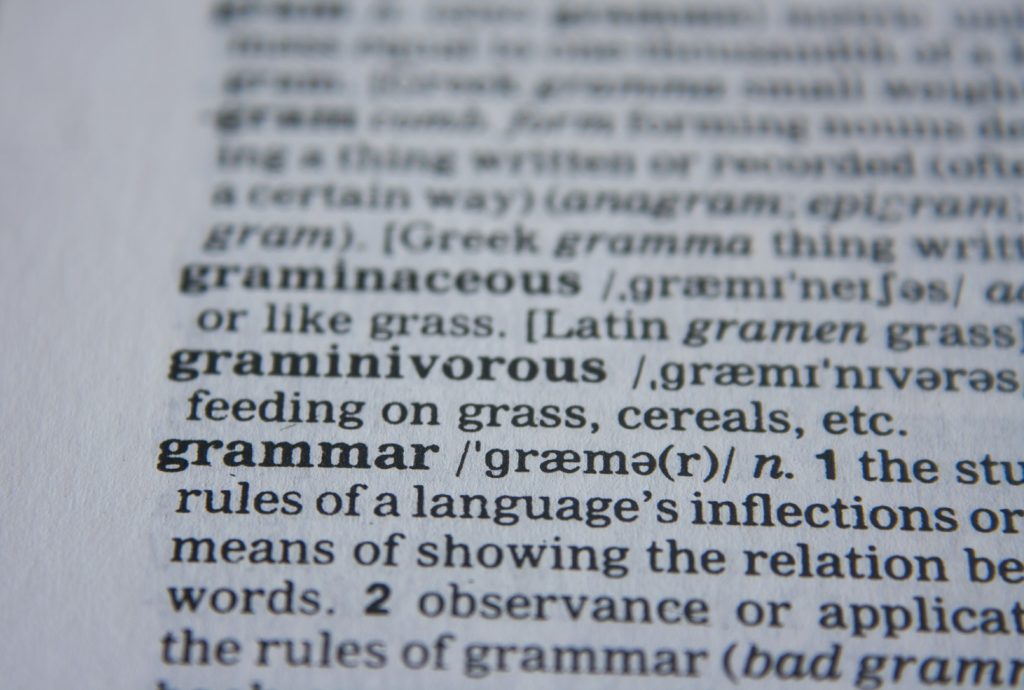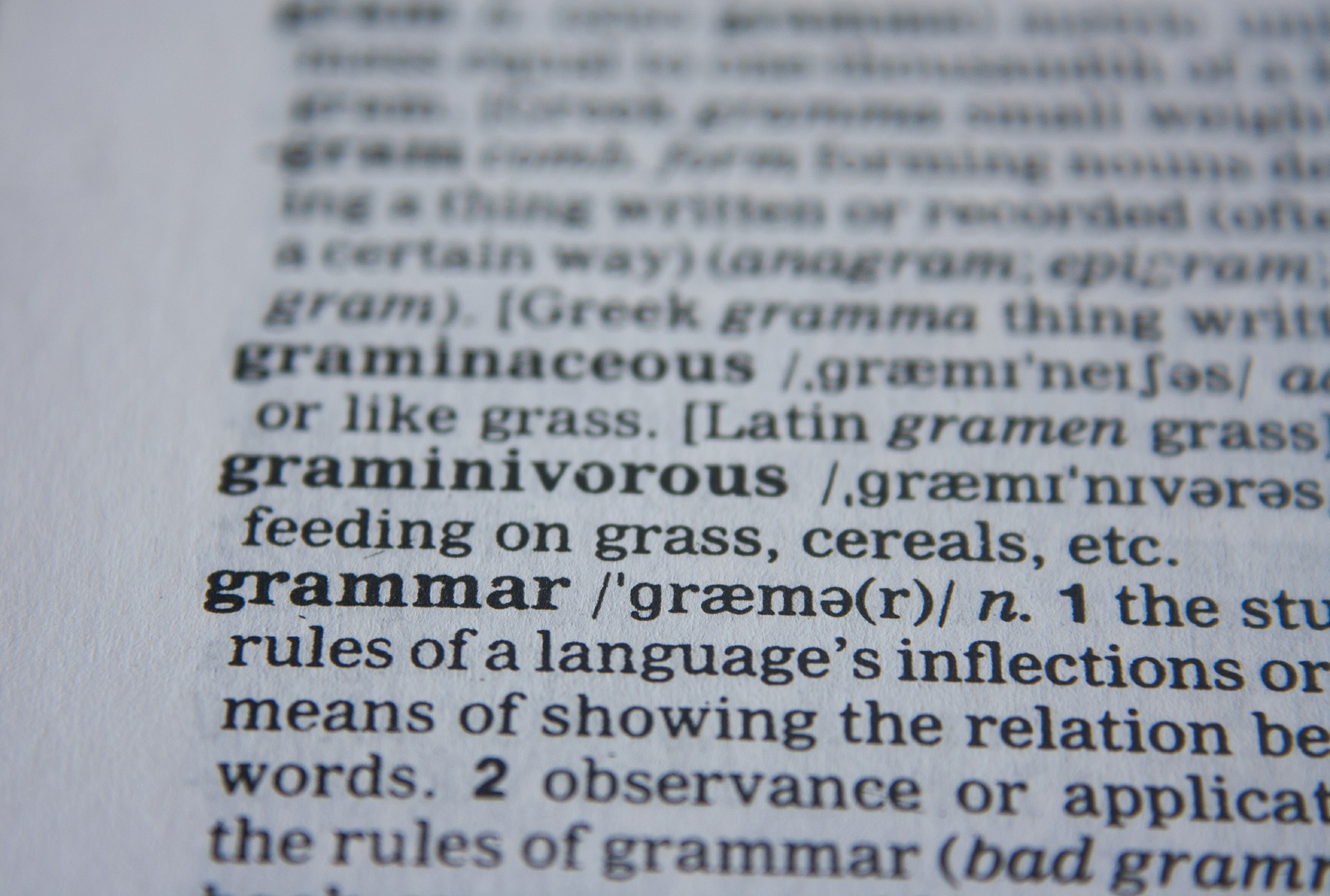
Written language has moved us to laughter and tears, inspired wars, grew and destroyed relationships. But word choice isn’t the only thing that matters when it comes to crafting a readable piece of text. Grammar is the set of rules that govern a language, and it extends much farther than an understanding of subjects, verbs, adjectives, and adverbs.
If you’re serious about your writing, you need to learn how to control grammar and syntax so that they can work for you. Mastering the concepts in the books on grammar and syntax in the list will give you a deeper understanding of the rules (and which ones you can break). They not only strengthen your writing, but also make your message clearer and let you control the pace at which readers navigate the ideas on the page. They give you tools to craft your story.
If you’re brushing up on grammar to catch mistakes in your own work, check out my tips on how to edit your own novel.
How to Make Grammar Concepts Stick
To make the most of the information in these books, I’d recommend taking notes on anything that isn’t intuitive to you. These notes can be Post-Its stuck around your monitor, a page in your journal, or a bulleted list on your computer. The important part is to refer back to it. Then, practice the rules in your own writing. Look for them in the books you’re reading. If a writer diverts from a rule, notice it and study it until the why and how makes sense. Keep referring back to your notes until the rules become automatic.
I’ve broken these books into two categories: books on grammar you can just read and books that feel more like a reference.
“Fun” Books on Grammar for Reading Straight Through
Woe is I: The Grammarphobe’s Guide to Better English by Patricia T. O’Conner
O’Conner, an editor at the New York Times Book Review at the time of publication, outlines common grammatical stumbling blocks in an easy-to-read and engaging prose. It’s intended for a beginner’s audience, explaining some of the rules by using examples to help make sense of them. It doesn’t go too in-depth and sometimes that’s exactly what you need.
I first encountered this book in high school after struggling though The Elements of Style. It delivered the rules that often tripped me up in a simple manner that I was able to immediately apply.
Best for: grammar beginners & people who get tripped up with apostrophes, homophones, punctuation, and active/passive sentence construction
Eats, Shoots & Leaves: The Zero Tolerance Approach to Punctuation by Lynne Truss
Written in conversational style, Truss’ book outlines the rules in true grammar-stickler form. She outlines how simple errors corrupt the meaning of prose out in the world.
While she does adhere to the belief that grammar is a set of rules that modern usage is constantly battling against and that it’s up to sticklers to hold the line, I’m a firm believer in knowing the rules before breaking them. This book, like Woe is I, provides a good foundation on which to build an understanding of grammar.
Best for: grammar beginners and sticklers alike
Grammar Girl Quick & Dirty Tips
Former journalism professor Mignon Fogarty’s blog offers a wide variety of writing tips. Choose your medium: video, podcast/audiobook, or blog post format. If you prefer a physical book, you’re in luck because she has published a few on general writing tips as well as grammar.
She often covers updates to style guides, changes in language usage, as well as general grammar rules.
Best for: beginner to advanced use
Grammar Reference Books and Resources
The Elements of Style by Strunk & White
Your high school English teacher probably treated this book with the reverence usually reserved for holy texts. It outlines the rules in a no-nonsense tone.
If you’re looking for a straightforward go-to, opt for the mostly recently updated version. This book follows AP style, which updates yearly. Working from an older version? Anytime changes occur, an online search returns plenty of articles explaining updates (and often complaining about them).
Best for: beginner to advanced reference use
The Purdue Online Writing Lab (OWL)
A frequently updated free resource, the OWL features guides to general grammar and punctuation rules, as well as an outline for formatting with the various style guides.
For me, the OWL is easy to access and provides up to date information.
Best for: beginner to advanced reference use
Offered as either an online subscription service or a physical book, The Chicago Manual of Style breaks down grammar and contains manuscript style guidelines used by editors and publishers. Gardner also offers The Chicago Guide to Grammar, Usage, and Punctuation which focuses specifically in these areas.
Most style guides update yearly, so a subscription ensures you stay on top of the changes in the field. If you prefer the feel of a book in hand instead, don’t worry. The changes are usually small and you can find articles about updates online.
Best for: intermediate to advanced reference use
These were my top picks for the best books on grammar and syntax. I hope the books on this list help you master the tougher grammatical concepts. Let me know in the comments below if you have any favorite grammar books I didn’t mention.
I usually recommend one or more of the resources above to editing clients, along with a list of repeat offenders for them to keep practicing.
Need an editor for your latest novel? Request a quote today.

Heather Hobbs is a fiction writer, editor, and avid reader.
If you have questions about editing your own manuscript or want to hire an editor, please reach out using the form below.




